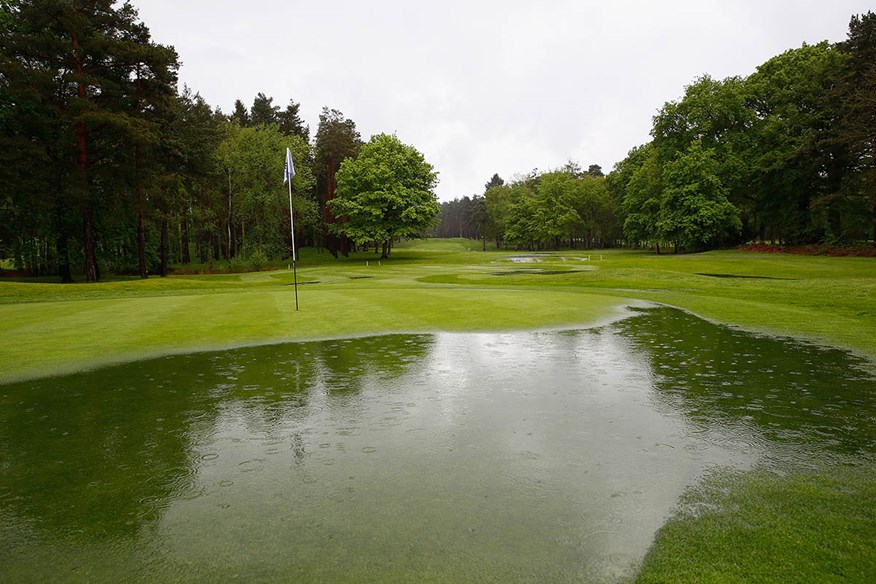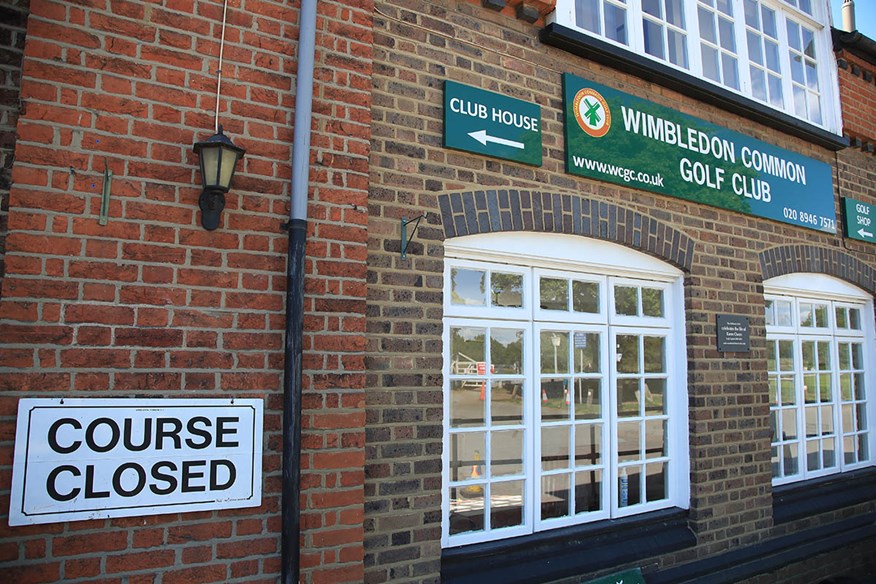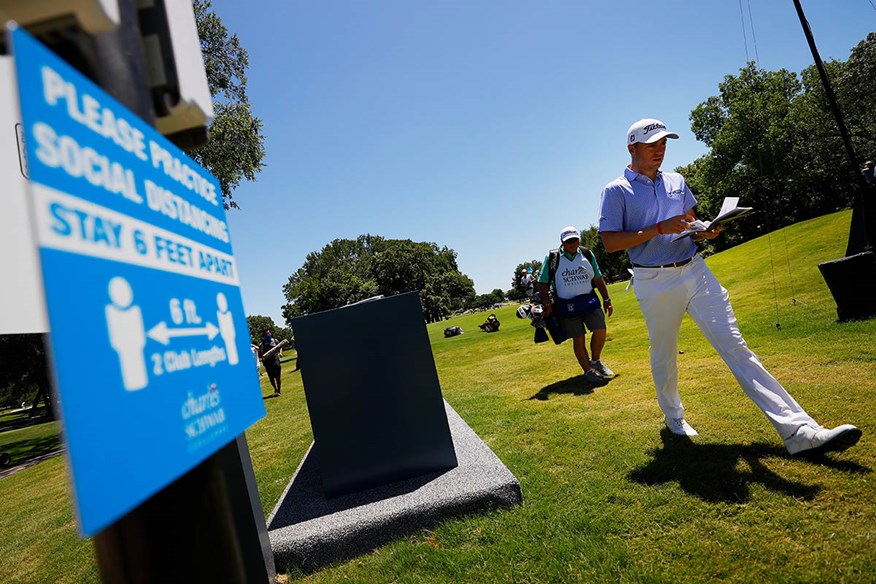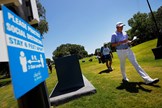How UK golf has benefited from the coronavirus
Last updated:
How UK golf has benefited from coronavirus.
The American author Og Mandino once said, “Always seek out the seed of triumph in every adversity”.
RELATED: Andrew Cotter: “I can’t understand the rationale behind golf courses being closed”
Golf in the United Kingdom has suffered its fair share of adversity lately. One of the wettest winters in history saw many clubs closed for weeks on end. This February was the wettest since records began. Storms Ciara and Derek brought more rain and record-breaking winds, keeping clubs closed and, in some cases, inflicting thousands of pounds worth of damage.

And then, of course, coronavirus. The disease few had heard of until this year, but none will ever forget. The UK went into lockdown on March 23 and golf clubs closed overnight. For nearly two months, they had no idea when they might be able to reopen. The timing couldn’t have been worse, coming when most clubs were asking members to renew their memberships. With huge economic uncertainty, many people were understandably reluctant to pay a large sum up front for a service that was unavailable indefinitely.
A survey of golf club managers found that four in five had received requests for rebates from members who had already paid. One manager revealed that his club had “been threatened with legal action by a member for the reason of paying for a service they are not receiving”.

“We are collecting subscriptions just now and, funnily enough, not many want to commit to paying,” said Edinburgh’s Duddingston Golf club secretary Duncan Ireland in late-March. “I fear that a lot of clubs may not be able to survive.”
He was right. Several clubs – most already in a precarious financial position – failed to survive the economic impact of lockdown and were forced to accept that their doors and fairways would remain closed for good.
“The pandemic is having an unprecedented impact on golf and many clubs are facing dire financial situations through no fault of their own,” said Martin Slumbers, chief executive of The R&A.
Two-thirds of golf clubs were revealed to have concerns about their short-term future, while 144 of 1,800 UK clubs surveyed found themselves in a ‘critical financial position’.
But better news was on the horizon…
A brighter future
With restrictions eased and golf courses reopened, clubs that survived lockdown are now entering an era of cautious optimism. “We are in a better position than we were before lockdown,” says Mike Tompkinson, captain of Louth Golf club in Lincolnshire.
With other leisure activities still severely limited due to coronavirus restrictions, the appetite for golf has soared, with some clubs signing up more than 100 new members a week.

“For the first time in about 25 years, demand for membership could outstrip supply,” says Stewart Judd, general manager of Bush Hill Park GC in London. “This is a massive challenge, but a real opportunity for the golf industry.”
Tee time booking service GolfNow had 90,826 visitors in the first week post-lockdown, obliterating its previous record of 34,777 (during the 2019 Open Championship). More than 2.3 million tee times were booked in England the first week courses reopened.
Epping Golf course owner Neil Sjoberg believes courses may get so busy that they have to close in order to undertake standard maintenance. “I can see a recurrence of the 1960s and ’70s when courses closed for a couple of weeks to give them a rest and greenkeepers were given a chance to repair divots and water tees,” he says. “I can remember Chingford Golf Club recording 86,000 rounds of golf in one year. Some courses had 110,000 rounds! Queues were so great at Hainault Golf Club – the ‘busiest course in Europe’ – that players had to sleep in their cars to claim the first slots at dawn!”

Sjoberg, who has spoken to several golf club managers in the area, issued a word of caution, however.
“All the venues have reported a membership surge – mostly at least 50 new members. One of the reasons for that rush is that most clubs charge pro rata fees and, as we are well into the season, new members get what they crave: summer-only membership at a reduced price. The test will be to see if they renew next year.”
The UK Swing
A further boost for the UK golf scene comes next month with the commencement of the European Tour’s ‘UK Swing’, an unprecedented six-week run of tournaments in England and Wales, beginning with the British Masters at Close House on July 22.

Although the tournaments are expected to be played behind closed doors, having some of the world’s best golfers competing on these shores and broadcast on television should further enhance the current burgeoning appetite for golf in the UK.
Football’s Premier League will have finished by the time four of the six UK Swing events take place, and with its European Championships postponed until 2021, golf may pick up some new fans.
Related: “I think the Ryder Cup should be played, even without fans” – Justin Rose
It’s a much-needed boost for the Tour presence of UK golf, which has suffered in recent years as events like the English Open and Wales Open fell from the schedule, the European Tour opting to follow the money into the Middle East, birthing events in Abu Dhabi, Dubai and Saudi Arabia. With four events in England and two in Wales during the space of six weeks, plus the Alfred Dunhill Links Championship, the Scottish Open, and the BMW PGA championship at Wentworth all still on the schedule, the UK’s role on the European Tour season will be bigger than it has been for decades.

“There are a lot of lights being shone on golf right now,” says European Tour CEO Keith Pelley. “It is one of the few sports that really lends itself to proper social distancing and that has made golf very fashionable. We have to capitalise on that.”
That seed of triumph appears to be beginning to bloom.
-
 Golf in the UK is bouncing back post-lockdown.
Golf in the UK is bouncing back post-lockdown.
-
 colt
colt
-
 Golf clubs across the UK were closed for months due to coronavirus.
Golf clubs across the UK were closed for months due to coronavirus.
-
 UK golf courses suffered due to a wet and windy winter.
UK golf courses suffered due to a wet and windy winter.
-
 Changing shoes in the car park used to be discouraged at some golf clubs, but now it's mandatory.
Changing shoes in the car park used to be discouraged at some golf clubs, but now it's mandatory.
-
 Golf has resumed with social distancing in place.
Golf has resumed with social distancing in place.
-
 Lee Westwood is due to host this year's British Masters at Close House Golf Club.
Lee Westwood is due to host this year's British Masters at Close House Golf Club.
